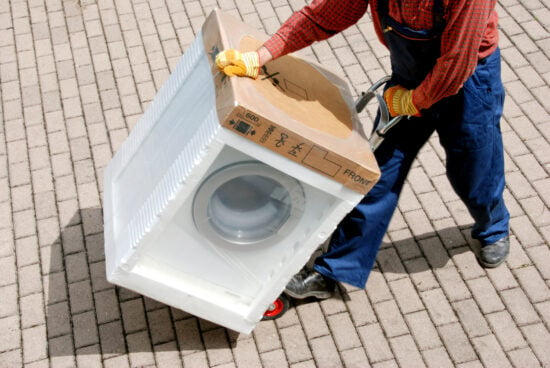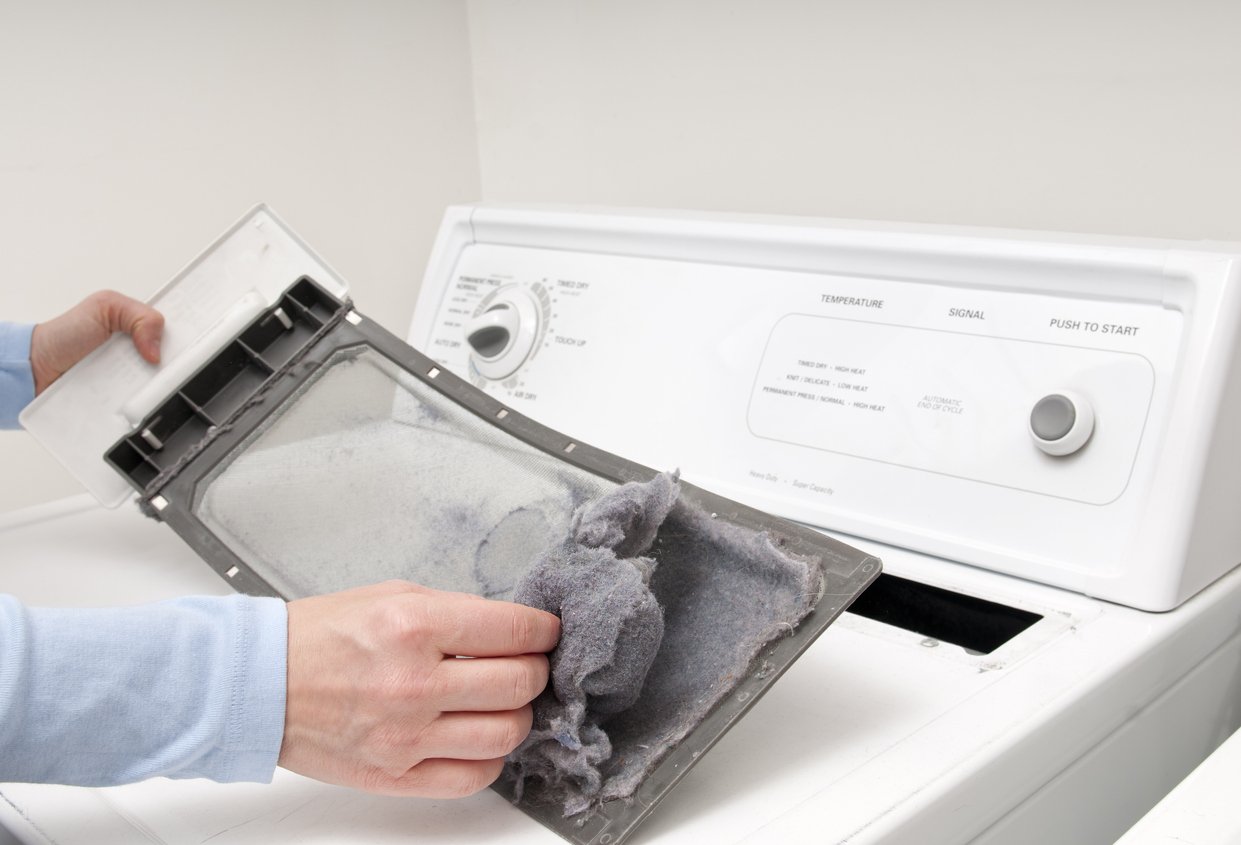Are you moving to a new place and taking your washer and dryer with you? If you want to manage a DIY move, be prepared because it is not a particularly easy task. Many washers and dryers can weigh over 200 pounds, so heavy lifting will be involved. To protect yourself and others, you need to be able to know how to move a washer and dryer safely. So call up your friends, and tell them you need some extra help. Follow this guide on how to move a washer and dryer.
How to Move a Washer and Dryer: How to Prepare Before the Move
If you decide to move a washer and dryer by yourself, preparation is vital. Moving both front-loading and top-loading appliances can be virtually impossible without the proper equipment, supplies, assistance, and yes, planning.
There are also significant safety risks involved considering the size and weight of the products, especially when moving them up and down stairs. You have to be extremely careful when moving your appliances so you don’t damage them or hurt yourself. Give yourself at least a week to prepare for the move. Here is how you can set yourself up for success:
1. Ask Friends or Family for Help
You should by no means be doing everything by yourself. Even if you don’t want to hire professional movers, assembling a team of helpers will make this move more efficient and safe. Regardless of whether you’re asking a family member, friend, or neighbor, always ensure they are physically fit enough to help move heavy objects because you do not want to risk a severe injury.
Let them know what day you’re moving, and ask if they’re available during the morning or afternoon. Also, remind them to wear appropriate clothing for the move, such as closed-toed shoes. Flip flops and Crocs a bad idea! Likewise, avoid baggy clothes to avoid getting caught on objects.
2. Clean the Washer and Dryer
You do not want a dirty washer and dryer in your new place, which is why we strongly recommend cleaning them out before your move. Giving your appliances proper cleaning improves both their safety and efficiency.
To clean your washer, all you need are tablets with a specific formula designed for sanitizing a washing machine. These reach the crevices in the drum and drain line. As for your dryer, simply empty your lint trap, remove any lingering lint, and clean the surface with a vacuum or cloth.
3. Disconnect Your Washer and Dryer
Follow these steps for disconnecting your machines:
- Disconnect the electricity. If your appliances are wired directly into the house, go to the fuse box and shift your laundry room breakers off. Otherwise, simply unplug the electrical cords.
- Turn off the local water supply to the washing machine. There should be a water valve next to the machine. If not, you may need to shut off the water valve to the entire house.
- Disconnect the washer’s water hoses. You will likely need a wrench to disconnect the water hoses from the wall. Once complete, place the hoses in a plastic bag so they do not get lost.
- If you have a gas dryer, disconnect the dyer’s gas line. Before you disconnect the gas line, make sure to shut off the gas valve to not cause an accident. You may also need a wrench for this task.
- Remove and store the dryer vents. Like the water hoses, place the vents in a plastic bag for safekeeping.
Pro Tip:
Before you start disconnecting the machines, consult your owner’s manuals. Your individual models may have unique requirements or safety considerations.
4. Gather the Right Moving Supplies
Having the right equipment is essential when planning how to move a washer and dryer. The necessary equipment for the move includes:
- Gloves
- Moving straps
- An appliance dolly or hand truck
- A vacuum cleaner
- A wrench
- Moving blankets
- Forearm forklifts
- Packing tape
- Shipping bolts or washer locks
Always bring extra supplies just in case a moving strap breaks or you lose a tool during the moving process.
How to Move a Washer and Dryer: Moving Day
Now that your machines are disconnected and dry, they should be ready for the actual move. Follow these steps:
1. Protect Your Washer and Dryer
Secure the tub of your washer in place with the shipping bolts. These pieces of hardware slot into place along the bottom of the drum so it doesn’t move or vibrate during transportation.
To protect the exterior of your washer and dryer from scratches, dents, and nicks, you should wrap them in moving blankets or cardboard. Secure the blankets with moving tape. While shrink wrap is a valuable option to help fasten the covers, avoid using plastic tarps or sheeting. Those fabrics trap humidity, which can breed mildew from leftover rainwater.
2. Have a Plan for Moving Up and Down Stairs
If you have to move a washer and dryer up or down stairs, forearm forklifts are an incredibly helpful tool. You can also secure the washer and dryer with bungee cords and ropes to an appliance dolly. Appliance dollies generally come equipped with built-in cords for added safety.
If going down a straight stairwell, an appliance dolly has useful tracks that enable you to lower or drag the appliance across multiple steps at once. Being able to glide across the surface prevents the typical jolting experienced whenever you hit a stair as you make your way down.
Pro Tip for How to Move a Washer and Dryer:
Every time you move heavy equipment up or down stairs, always stretch beforehand. Likewise, take your time. There is no need to rush. When you rush, you risk injury. Moving heavy equipment like a washer and dryer is strenuous, so we should remind you again to definitely not be doing this alone.
3. Load the Machines Onto a Moving Truck
Now that you got your washer and dryer out of your old house, it is time to get them on your moving vehicle. Placement of your washer and dryer is vital, especially if you are moving a bunch of other items. You should factor in the distance and intricacy of the move. For instance, are you taking the highway or traveling through hills? Likewise, are you driving around the block, across the state, or cross-country?
Generally, the safest place to load your washer and dryer is closer to the cab of the vehicle. Being closer to the cab evens out the weight distribution, which helps stabilize the vehicle and reduces shifting.
If you use a pickup truck instead of a moving van, keep an eye on your appliances during transportation. We recommend investing in some ratchet tie-down straps to help secure your washer and dryer. They will keep your items in place and are more secure than traditional ropes or cords.
4. Move Them Into Your New Home or Apartment
Once you get to your new place, do not immediately rush to install your washer and dryer. Create a plan for your total unpacking process. First, you need to hook up the gas, water, and electricity. Make sure to set your appliances a few feet away from their new location, leaving yourself enough space to access the back wall. Likewise, if you have to move your washer and dryer up or down steps again, make sure you approach it the same way you did at your old house: safely and slowly. If you’re tired from the initial move, wait until you are fully rested before tackling the final installation. When fatigued, you run a far greater risk of injury.
Pro Tip for How to Move a Washer and Dryer:
Make sure you identify the cold water supply and hot water supply before installing your machine.
5. Consider Storing Your Washer and Dryer
If you’re between places, consider storing your washer and dryer in a storage unit. Storage units are generally inexpensive and great locations to keep important items. If you’re using a storage unit, you want to cover your appliances with moving blankets. Make sure they have some airflow, and keep them covered until you officially move into your new place. If you do not store them correctly, you run the risk of your appliances becoming damaged from mold or mildew buildup.
Now that we went over the basics for how to move a washer and dryer, you should be adequately prepared to tackle other heavy challenges, such as moving a piano or a refrigerator. But remember: never move them by yourself! Always ask for help. Chances are that if you are moving to a new house, you are moving other large appliances, too. If that is the case, feel free to check out some of our other helpful guides.
Additional Moving Resources:
Moving and packing guides
- How to Move a Couch
- How to Move a Mattress
- How to Move a Refrigerator
- How to Move a Piano
- How to Move a Pool Table
- How to Pack Shoes for Moving
- How to Pack Dishes and Glasses








